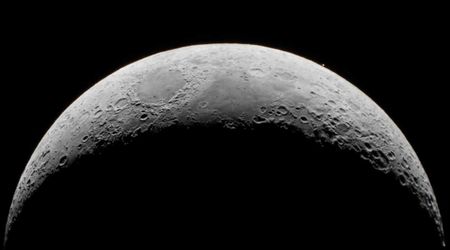China is sharing precious moon samples globally — but one 2011 law prevents NASA from accessing them

Back in 2020, China's Chang'e 5 brought valuable lunar samples back to Earth, which are now being made available to researchers around the globe. Scientists from various countries other than the United States, including Europe, Ethiopia and Russia, are receiving portions of the 1,731-gram sample for analysis. British planetary scientist Mahesh Anand of the Open University in Milton Keynes, in early May, traveled to China to borrow 60 milligrams of the 1,731-gram Chang'e 5 sample, as reported on Space.com.

In many of these cases, government funding agencies are supporting the research conducted on the borrowed lunar material, facilitating important scientific inquiry. However, legal restrictions pose a challenge for US-based scientists who are seeking to study Chang'e 5 samples. Unlike their international counterparts, who benefit from government funding, NASA is currently barred from financing American researchers for this purpose. As a result, only one U.S planetary scientist, Timothy Glotch, has been able to obtain a sample, with private funding provided by his institution, Stony Brook University in New York.
The difficulty faced by US-based scientists in accessing the moon samples stems from the Wolf Amendment, a law enacted in 2011. It effectively prohibits any direct bilateral cooperation between NASA (and its funded researchers) and the China National Space Administration (CNSA) and Chinese scientists. This amendment aimed to prevent the Chinese government from gaining knowledge of American space technologies that might later be used for military purposes against the United States. This policy represents a shift from a past where scientific pursuits often bridged divides between nations.

Instances such as the US-Soviet efforts in the Search for Extraterrestrial Intelligence (SETI) during the Cold War, including a significant conference USSR in 1971, and the Apollo-Soyuz mission in 1975, where astronauts and cosmonauts met in space, exemplify this tradition. However, the Wolf Amendment now necessitates prior approval from Congress for any government-level space science cooperation between the US and China.
Fortunately for American Planetary Scientist, Timothy Glotch and his research team, which includes collaborators from San Francisco State University and the University of Hong Kong, China still shared a sample with them, provided their work was privately funded. Accessing these samples allows American researchers to do a direct comparative analysis between the newly acquired Chang'e 5 samples and the lunar samples collected during the Apollo era.

The Chang'e 5 acquired its sample from Mons Rümker, which is a geologically ancient volcanic region located in the extensive Oceanus Procellarum ("Ocean of Storms"). Comparing this newly obtained sample directly with Apollo samples, which were collected from various sites across the Moon, presents a valuable opportunity for Glotch and his fellow researchers to uncover more details about lunar volcanism that created these samples, as mentioned in the outlet.
Initial findings by Chinese scientists reveal a significant age difference, with the basaltic rock from Chang'e 5's sample being billions of years younger than the samples brought back by the Apollo mission. This discovery has expanded our understanding of the Moon's history. Suggesting that the Moon was volcanically active for much longer than previously thought, potentially as recently as 120 million years ago. Meanwhile, in the UK, Anand and a team of scientists plan to heat a portion of their 60 milligram Chang'e 5 sample to a high temperature of 2,550 degrees Fahrenheit. This process will allow them to extract noble gases like argon and krypton, as well as carbon, nitrogen, and oxygen.









